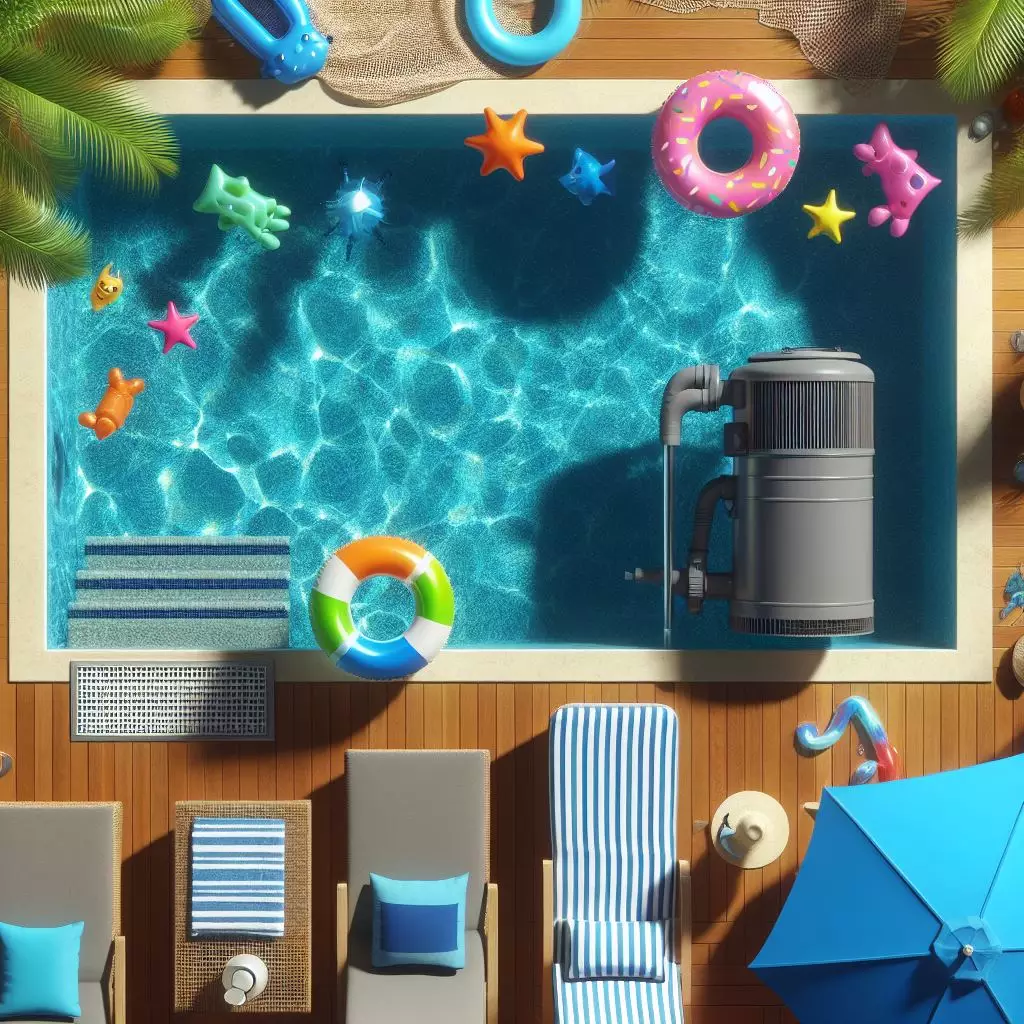Owning a swimming pool brings the joy of leisure and relaxation right to your backyard. However, it also comes with the responsibility of upkeep to ensure the water remains clean and safe for everyone. Central to this task is the pool’s filtration system, tirelessly working to remove impurities. The unsung hero in monitoring its efficiency is the pool filter pressure gauge—a small device with a big role in maintaining pool health. What should the pool filter pressure gauge read?

Basics of Pool Filter Pressure Gauge
A pool filter pressure gauge measures the pressure inside your pool’s filter system, usually in pounds per square inch (psi). This reading is vital for assessing the system’s operation, indicating when maintenance is due or if there are any potential issues within the pool’s filtration system. Understanding how to read this gauge accurately can prevent costly repairs and keep your pool sparkling clean.
Normal Pressure Gauge Readings
A “normal” pressure range varies by pool but is typically established after installing a new filter or following a thorough cleaning. For most pools, this range is between 10-15 psi. However, the exact number depends on your pool’s specific setup, including the size of the pool, the type of filter used, and the pump’s strength. It’s essential to document this baseline pressure under normal conditions for future reference.
How to Read a Pool Filter Pressure Gauge Correctly
To accurately read your pool’s pressure gauge, follow these steps:
- Ensure the pump is running and the water is circulating through the filter.
- Locate the gauge on the filter and note the current psi reading.
- Compare this reading to your established baseline. A deviation of more than 5-7 psi might indicate a problem.
High Pressure vs. Low Pressure: Implications
High pressure readings can signal a dirty filter, a blockage in the return line, or possibly a malfunctioning pump. Conversely, low pressure might point to a leak, an issue with the pump’s suction side, or a filter problem. Recognizing these signs and understanding their implications can help you take swift action to mitigate any issues.
Maintaining Your Pool Filter for Optimal Pressure Readings
Routine maintenance is key to keeping your pool filter operating efficiently. This includes:
- Regularly cleaning or replacing the filter media (sand, cartridge, or DE powder).
- Checking for and removing any obstructions in the pump basket and skimmer.
- Ensuring all valves are in the correct position and fully operational.
Troubleshooting Common Pool Filter Pressure Problems
When faced with pressure issues, consider the following troubleshooting tips:
- For high pressure: Backwash your filter or clean the filter media. Check for closed or partially closed valves and open them as necessary.
- For low pressure: Inspect for leaks in the piping or pump housing. Clean out the pump basket and skimmer to ensure proper water flow.
Choosing and Replacing a Pool Filter Pressure Gauge
If you need to replace your pressure gauge, select a model compatible with your pool’s filtration system. Look for gauges with clear, easy-to-read displays and ensure they are correctly calibrated. Replacing a gauge typically involves unscrewing the old one and screwing in the new one, a simple task that can be done without professional help.
Enhancing Pool Filtration Performance through Pressure Monitoring
Regular monitoring of your pool’s pressure gauge can lead to more efficient filtration and cleaner water. Adjust your maintenance schedule based on the readings, increasing the frequency of cleaning when pressure rises above normal levels.
Smart Pool Technology and Pressure Monitoring
Modern smart pool systems often include digital pressure monitoring, allowing you to check your pool’s filter pressure remotely and receive alerts when readings deviate from normal ranges. These systems offer a convenient way to stay ahead of maintenance needs and ensure your pool remains in optimal condition.
Conclusion
Understanding and monitoring your pool filter pressure gauge is crucial for maintaining a healthy swimming environment. By keeping an eye on pressure readings and performing regular maintenance, you can prevent most pool filtration issues before they become serious problems. Whether you’re a seasoned pool owner or new to pool maintenance, mastering the use of your pressure gauge is a vital step in ensuring your pool’s longevity and enjoyment for all.
